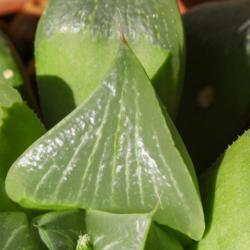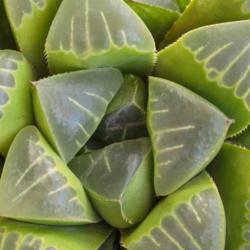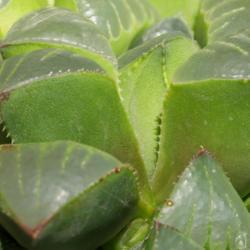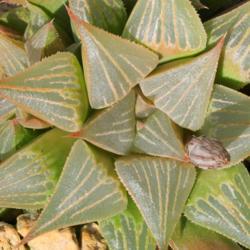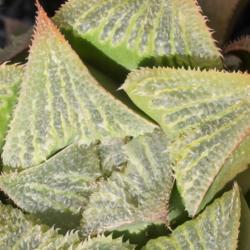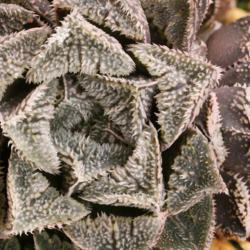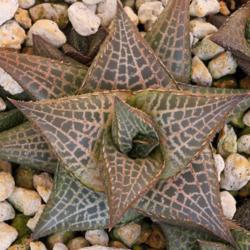Few small succulents attract the eye and reward close inspection better than the windowed Haworthias.
The Haworthias are a group of small, green to brown or black leaf succulents, close relatives of the aloes, from South Africa. They form rosettes that are usually stemless but may have a short stem. In cultivation they are almost always container plants, due to their size and lack of cold tolerance. They make excellent house plants given strong light, or outdoor plants for at least some of the year, given a bit of protection from the sun. They often grow half-buried in habitat, or in the shelter of larger plants.
Look closer at some of them in the right light and you may discover incredible details. There is a surprising amount of variation in leaf shape, texture, and color, given the uninteresting small white flowers that are characteristic of this group.
A number of Haworthias have translucent leaf tips that allow light to pass. I would like to show a few of the
windowed Haworthias, emphasizing the plants that are more common in cultivation, and species rather than hybrids (of which there is a greater number).
Among the most common Haworthia species in cultivation with windowed leaves is
H. cymbiformis, which typically forms clumps that can be easily be divided for propagation.
That species is closely related to, and sometimes hard to distinguish from,
H. cooperi. The round-tipped versions of
cooperi are particularly prized.
In contrast, members of the retuse group have distinct triangular features on their tips
The name of this species means "pounded back", and this refers to the way the windowed part of the leaves is flattened near the tip, and in a different plane from the rest.
Other species share the same general layout.
At the extreme end of this spectrum lies
Haworthia truncata, which is less common in cultivation and usually a bit pricey. The leaves of the typical form have a distinctive distichous arrangement. They are often buried up to the windows in habitat.
On top of the variations in leaf shape and rosette form, there are also interesting variations in texture, as you may have noticed from close examination of the last image. Not all the windowed Haworthias are shiny and sleek like
retusa. These two are unusually rough textured:
Specialist breeders have seized upon the variations in this group (color, shape, texture, patterning) and generated hybrids with unusual combinations or exaggerated features. Just two examples:
Finally, there are also plants in the twin genus
Haworthiopsis with windows. This species was named for its tessellated window patterns.
